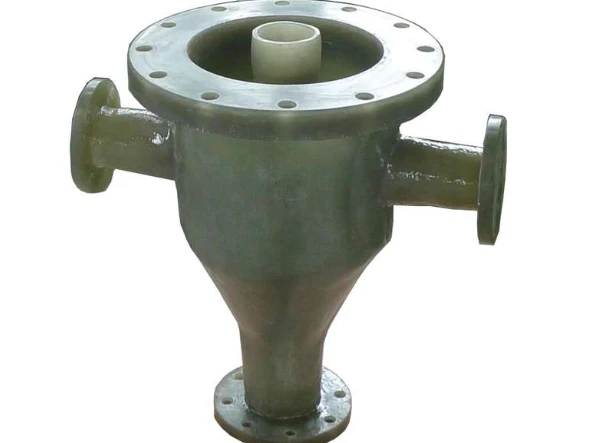
-
 Afrikaans
Afrikaans -
 Albanian
Albanian -
 Amharic
Amharic -
 Arabic
Arabic -
 Armenian
Armenian -
 Azerbaijani
Azerbaijani -
 Basque
Basque -
 Belarusian
Belarusian -
 Bengali
Bengali -
 Bosnian
Bosnian -
 Bulgarian
Bulgarian -
 Catalan
Catalan -
 Cebuano
Cebuano -
 China
China -
 China (Taiwan)
China (Taiwan) -
 Corsican
Corsican -
 Croatian
Croatian -
 Czech
Czech -
 Danish
Danish -
 Dutch
Dutch -
 English
English -
 Esperanto
Esperanto -
 Estonian
Estonian -
 Finnish
Finnish -
 French
French -
 Frisian
Frisian -
 Galician
Galician -
 Georgian
Georgian -
 German
German -
 Greek
Greek -
 Gujarati
Gujarati -
 Haitian Creole
Haitian Creole -
 hausa
hausa -
 hawaiian
hawaiian -
 Hebrew
Hebrew -
 Hindi
Hindi -
 Miao
Miao -
 Hungarian
Hungarian -
 Icelandic
Icelandic -
 igbo
igbo -
 Indonesian
Indonesian -
 irish
irish -
 Italian
Italian -
 Japanese
Japanese -
 Javanese
Javanese -
 Kannada
Kannada -
 kazakh
kazakh -
 Khmer
Khmer -
 Rwandese
Rwandese -
 Korean
Korean -
 Kurdish
Kurdish -
 Kyrgyz
Kyrgyz -
 Lao
Lao -
 Latin
Latin -
 Latvian
Latvian -
 Lithuanian
Lithuanian -
 Luxembourgish
Luxembourgish -
 Macedonian
Macedonian -
 Malgashi
Malgashi -
 Malay
Malay -
 Malayalam
Malayalam -
 Maltese
Maltese -
 Maori
Maori -
 Marathi
Marathi -
 Mongolian
Mongolian -
 Myanmar
Myanmar -
 Nepali
Nepali -
 Norwegian
Norwegian -
 Norwegian
Norwegian -
 Occitan
Occitan -
 Pashto
Pashto -
 Persian
Persian -
 Polish
Polish -
 Portuguese
Portuguese -
 Punjabi
Punjabi -
 Romanian
Romanian -
 Russian
Russian -
 Samoan
Samoan -
 Scottish Gaelic
Scottish Gaelic -
 Serbian
Serbian -
 Sesotho
Sesotho -
 Shona
Shona -
 Sindhi
Sindhi -
 Sinhala
Sinhala -
 Slovak
Slovak -
 Slovenian
Slovenian -
 Somali
Somali -
 Spanish
Spanish -
 Sundanese
Sundanese -
 Swahili
Swahili -
 Swedish
Swedish -
 Tagalog
Tagalog -
 Tajik
Tajik -
 Tamil
Tamil -
 Tatar
Tatar -
 Telugu
Telugu -
 Thai
Thai -
 Turkish
Turkish -
 Turkmen
Turkmen -
 Ukrainian
Ukrainian -
 Urdu
Urdu -
 Uighur
Uighur -
 Uzbek
Uzbek -
 Vietnamese
Vietnamese -
 Welsh
Welsh -
 Bantu
Bantu -
 Yiddish
Yiddish -
 Yoruba
Yoruba -
 Zulu
Zulu
cpvc frp pipe
The Advantages and Applications of CPVC FRP Pipes
In the realm of modern industrial applications, the demand for durable, corrosion-resistant piping systems has skyrocketed. One emerging solution that has gained significant attention is the combination of chlorinated polyvinyl chloride (CPVC) and fiber-reinforced plastic (FRP) piping systems. The unique properties of CPVC, along with the strengthening capabilities of FRP, create a hybrid material that is revolutionizing water transport, chemical processing, and many other sectors.
Understanding CPVC and FRP
CPVC (Chlorinated Polyvinyl Chloride) is a thermoplastic polymer that is widely used for a variety of plumbing and industrial applications due to its excellent chemical resistance and thermal stability. Unlike standard PVC, CPVC can withstand higher temperatures, making it ideal for hot water systems and a wide array of industrial processes.
On the other hand, Fiber-Reinforced Plastics (FRP) are composite materials made from a polymer matrix reinforced with fibers, most commonly glass or carbon fibers. This combination lends immense strength and rigidity while remaining lightweight, showcasing exceptional resistance to corrosion and chemical degradation.
When combined, CPVC and FRP form a robust piping solution that leverages the strengths of both materials.
Benefits of CPVC FRP Pipes
1. Corrosion Resistance One of the primary advantages of CPVC FRP pipes is their unparalleled resistance to chemical corrosion. Traditional metal pipes often succumb to rust and degradation when exposed to harsh chemicals or brine solutions. Conversely, CPVC FRP pipes maintain their integrity over time, making them ideal for chemical processing plants, wastewater treatment facilities, and other environments where corrosive materials are present.
2. Durability The structural integrity of FRP provides CPVC pipes with enhanced durability. This makes them less susceptible to damage from impacts or external stressors, ensuring a longer service life and reduced maintenance costs. The combination results in a piping system that can withstand extreme environmental conditions.
cpvc frp pipe

3. Temperature Tolerance CPVC's higher thermal tolerance allows these pipes to carry hot fluids without risk of deformation or failure. This characteristic is crucial in applications involving hot water or steam, ensuring safe and effective operation.
4. Lightweight Construction Compared to traditional piping materials like steel, CPVC FRP pipes are significantly lighter, which simplifies installation and reduces labor costs. The lightweight nature also allows for easier handling and transportation, making it an efficient choice for large-scale projects.
5. Cost-Effectiveness While the initial investment in CPVC FRP piping may be higher than traditional materials, the long-term savings on maintenance and replacement costs can offset this expense. The longevity and resilience of these pipes lead to fewer downtime periods, thereby enhancing productivity and reducing operational costs.
6. Versatility CPVC FRP pipes are suitable for a wide range of applications, from residential plumbing systems to extensive industrial piping networks. Their adaptability and compatibility with various fittings and connection methods further enhance their appeal across diverse industries.
Applications of CPVC FRP Pipes
The versatility of CPVC FRP pipes allows for a multitude of applications across various sectors
- Chemical Processing Ideal for transporting corrosive liquids and gases. - Water Treatment Used in both potable water systems and wastewater management. - Marine Applications Employed in shipbuilding and repair due to their resistance to saltwater corrosion. - Food and Beverage Industry Used for transporting ingredients and products while meeting sanitary standards. - Pharmaceuticals Ensures the transport of sensitive materials without contamination.
Conclusion
In conclusion, CPVC FRP pipes represent a cutting-edge solution for industries seeking a reliable, durable, and cost-effective piping system. The combination of CPVC’s chemical resistance and FRP’s strength creates an innovative product that addresses the challenges presented by traditional piping materials. As industries continue to evolve and face new challenges, CPVC FRP piping technology is likely to play a crucial role in shaping the future of industrial infrastructure. By investing in these advanced piping solutions, companies can enhance their operational efficiency, reduce maintenance costs, and ultimately create a safer and more sustainable environment for their operations.









